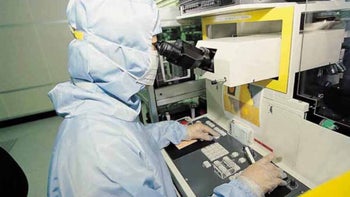This discovery could result in much faster smartphones

Moore's Law, the observation made by former Intel co-founder and CEO Gordon Moore in the mid 60s and revised in the mid 70s, essentially calls for the transistor density on a chip (the number of transistors that fit inside a square mm) to double every other year. Over the last few years, chip makers have had to settle for less than 100% increases in this metric although the gains have been significant. For example, the transistor density on Apple's new 5nm A14 Bionic is said to be approximately 134 million, up from roughly 90 million on the 7nm A13 Bionic. That is a 49% hike.
Graphene microchips could result in faster, lighter phones
As far as the timeline is concerned, TSMC and Samsung Foundry remain on Moore's pace with the former starting risk production of 3nm chips due later this year followed by volume production in the second half of 2022. Compared to its 5nm chips, TSMC's 3nm chip is expected to deliver a 10% to 15% hike in performance or a 25%-35% increase in power consumption.

Graphene-composite power banks charge up to five times faster
If you've lost sleep worrying about the possibility of smaller performance gains from future chips, perhaps you'll soon be able to get some sleep. According to ZDNet, the University of Sussex in the U.K. has discovered a way to give nanomaterials transistor-like properties. A nanomaterial is a material whose unit size ranges between 1 and 100nm. The material actually used by the university is graphene which is defined as a "one-atom-thick layer of carbon atoms arranged in a hexagonal lattice." By folding a layer of graphene like origami paper, the material has the properties of some of the electric components used on chips. This discovery could enable the production of small microchips that would allow faster and more energy-efficient handsets to be made. The size of the microchips that could be created with nanomaterials would be so small that it would create more room inside a device to place additional chips.
Graphene appears to be the nanomaterial of choice for this type of component because of its conductivity abilities. Several power banks are using graphene-composite batteries to cut back on charging times. With graphene, a lithium-ion batteries can charge up to five times faster so that a lithium-ion battery that takes one hour to charge would complete the task in just 12 minutes. The nanomaterial is also 200 times stronger than steel and six times lighter. Samsung has patented graphene based innovations in South Korea and the United States.
Graphene could end up being used to produce other materials found on a smartphone which should reduce the weight of a handset using the material. Several years ago, a Korean research company was able to create an OLED display using graphene and last month, a company called Appear Inc. said that it would launch a 5G phone using a graphene battery; this would be the first phone with such a component and would also be the lightest 5G smartphone. Expected to be launched next month, the phone will be manufactured by Foxconn and one million units are forecast to be sold in the first six months. The device would use a new innovative water-resistant technology. Appear is known for its Graphene Super 20 Power Bank, which recharges in 20 minutes using the company's proprietary Fast Charge battery technology. The company will soon integrate its graphene battery technology into a smartphone.
Alan Dalton, a professor at the school of mathematical and physics sciences at the University of Sussex, said, "We're mechanically creating kinks in a layer of graphene. It's a bit like nano-origami. This kind of technology – 'straintronics' using nanomaterials as opposed to electronics – allows space for more chips inside any device. Everything we want to do with computers – to speed them up – can be done by crinkling graphene like this."










Things that are NOT allowed: